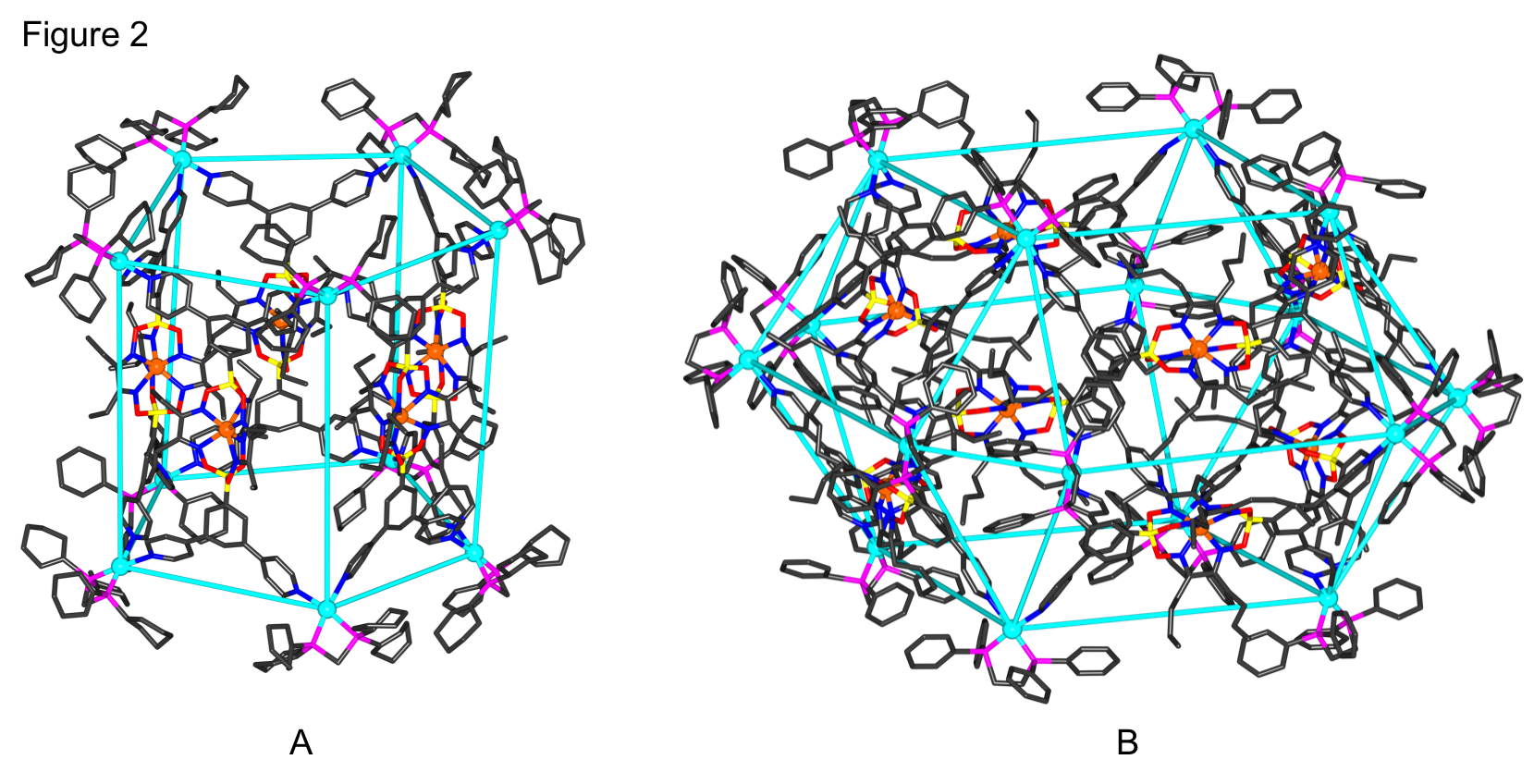The Intricate Structural Chemistry of MII2nLn-Type Assemblies
By choosing an appropriate ligand, it is possible to influence the size, the geometry and the functionality of a metallasupramolecular assembly. Functionalized clathrochelate complexes have recently emerged as a promising new class of metalloligands for applications in supramolecular coordination chemistry. [1] The reaction of cis-blocked, square planar MII complexes with tetratopic N-donor ligands is known to give metallasupramolecular assemblies of the formula M2nLn. We recently demonstrate that unusual geometries are accessible like the Pt8L4 cage with gyrobifastigium-like geometry. [2] A geometric analysis of the ligands could explain how size and geometry influence the self-assembly process. The metalloligands used gave assemblies of type Pt8L4, which adopt barrel- or gyrobifastigium-like structures (Figure 1A and 1B). Larger assemblies are possible, as Pt10L5 complex and a Pt16L8 complex (Figure 1C and 1D). The latter has a molecular weight of more than 23 kDa and a diameter of 4.5 nm, making it the largest, structurally characterized M2nLn complex described to date.

By X-ray crystallography, we characterize both new of M2nLn complexes, namely a pentagonal Pt10L5 barrel and a Pt16L8 complex (Figure 2A and 2B). The latter assembly displays an unprecedented square orthobicupola geometry. Overall, we think that our study will provide an important foundation for future investigations of coordination barrels.

[1] G. Cecot, S. M. Jansze, M. D. Wise, K. O. Zhurov, T. K. Ronson, A. M. Castilla, A. Finelli, P. Pattison, E. Solari, R. Scopelliti, G. E. Zelinskii, A. V. Vologzhanina, Y. Z. Voloshin, J. R. Nitschke, K. Severin, J. Am. Chem. Soc. 2016, 138, 2046-2054.
[2] G. Cecot, B. Alameddine, S. Prior, R. De Zorzi, S. Geremia, R. Scopelliti, F. T. Fadaei, E. Solari, K. Severin, Chem. Commun. 2016, 48, 11243-11246.